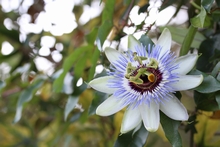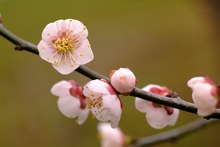Tulip: The Flower that Caused the 1630s Market Bubble - Why the Netherlands' Floral Emblem is So Popular
June 26, 2017

Hello again, Naho here. Recently, apart from practising speaking English, I've started learning about investing.
After some research, I read about the era during which the Dutch were obsessive with investing, and I was astonished to find out that they all had their eyes set on tulip bulbs.
Tulips' Long-lasting Popularity in the Netherlands
It was said that although tulips were native of Turkey, ever since the 16th century when the Turkish king gave some tulip bulbs to a Dutch diplomat, tulips have been widely cultivated across the Netherlands and became their national flower.
At that time, wealthy Dutch gardeners branded themselves florists and were engaged in the breeding of different plants. Easy to grow and pleasant to the eye, tulip flowers soon gained great attention within the gardening industry, and various tulip gardens were established across the country.
Rhododendron: Nepal's Floral Emblem - The True "Flower of the Heights"
June 19, 2017

Hello again, Naho here. Did you know that August 11 is this year's "Mountain's Day" in Japan?
In Fact, Nepal's floral emblem rhododendrons are known as the "flower of the mountains" among local hikers .
Said to be the origin of the Japanese expression "flower of the heights" ("Takane no hana," often used to describe a prize beyond one's reach, an unattainable object, etc.), rhododendrons are also flowers of unexpected secrets.
Nepal's National Color: the Rhododendron Red
In Japan, rhododendrons are often grown in luxurious apartments and house gardens. With their showy, gorgeous blossoms, rhododendrons are sometimes called the "Queen of flowers," and adored by many.
Although rhododendrons grow in multiple colors such as pink, white and yellow, the type that was designated to be Nepal's national flower is the red variation called the "laliguras." To Nepali people, the red color evokes such strong feelings that it is used on their national flag. In Nepal, one can also see airplanes, sports team uniforms, etc., painted in red.
Blue Passion Flower: A Symbol of Suffering - The Surprising Origins behind Paraguay's Floral Emblem
June 12, 2017

Hello again, Naho here. Time management is extremely important at work. I personally like keep a clock on my desk to remind me of how precious time is.
There is a flower that looks just like the dial of a clock, and that is the blue passion flower - which is also the floral emblem of Paraguay.
Surprisingly, however, this flower used to be associated with something distinctively different to a clock.
Blue Passion Flower: Symbol of Suffering?
With its petals resembling the short hand and the long hand of a clock, the blue passion flower looks just like a dial plate, which is why the flower is called "rokei-sou" (the clock plant) in Japanese. However, back in the day, the blue passion flower was often associated with something distinctively different.
The "passion" in "passion flower" does not mean "enthusiasm" in this context, but rather "suffering." This association came from the facts that petals of the flower form the shape of a halo and that its stamen and pistil look like the image of Jesus Christ bearing the Cross.
Plum: Taiwan's Floral Emblem with Colorful Meanings
June 5, 2017

Hello again, Naho here. Just finished my work lunch - plain rice with umeboshi (pickled plum), that's the typical Japanese bento for you!
In fact, the plum flower is Taiwan's floral emblem, and it bears deep meanings to the region as a whole.
Taiwanese Values Hidden Behind the Plum
Plum blossoms usually start in February or March, when it's still very cold in the northern hemisphere . It's also said that the more bitter the weather, the more beautiful the blossoms. Perhaps through the hardy flowers of plum, Taiwanese people saw a soul that perseveres and stays strong against the nature's adversity, and thus made it their floral emblem.
Plums flowers are attributed symbolic value in the island of Taiwan. The five round petals of a plum each represent one of the five branches of the Taiwanese constitution: legislation, administration, justice, examination and inspection.
| << May 2017 | June 2017 | July 2017 >> |
Japanese Translation Agency Arc Communications
For urgent needs, call:
+81-3-5730-6133
